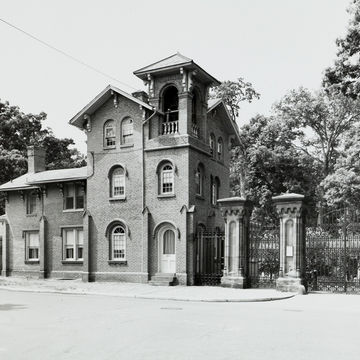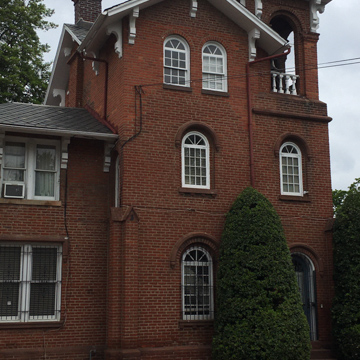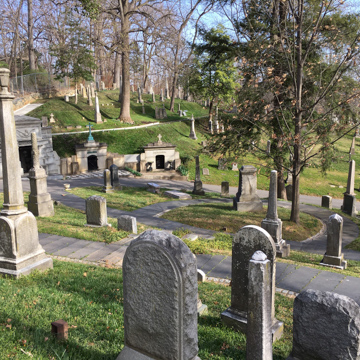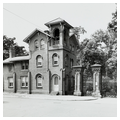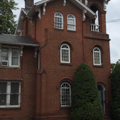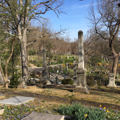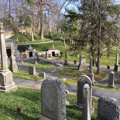The Oak Hill Cemetery Gatehouse marks the entrance to a large wooded expanse of land on the northern boundary of Georgetown. Banker William Wilson Corcoran, who donated the land for a cemetery, hired de la Roche, an engineer who had worked on the grounds of the old Naval Observatory in Foggy Bottom, to survey and lay out the cemetery grounds. It has been assumed that de la Roche also designed the gatehouse, intended to house offices and two stories of living quarters for the gatekeeper and his family.
Resembling a miniature Italian villa with an irregular, picturesque silhouette, the brick building is organized around a tower at the southeast corner. Red sandstone accentuates












